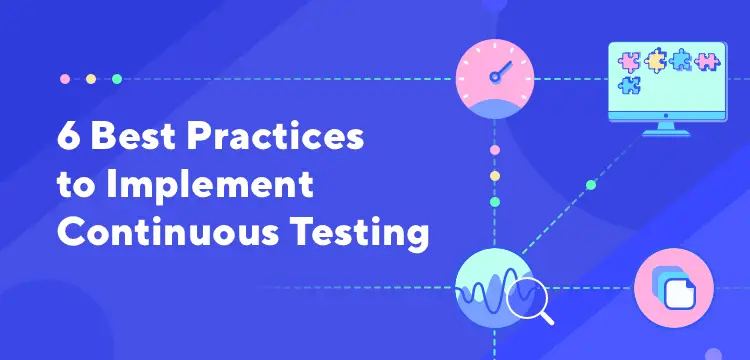What is Continuous Testing? Comprehensive Guide for Newbie

Continuous testing is a great way to ensure the product is released to the market at quality customers expect. It’s is crucial in a modern development environment as it helps bring testing up to speed with the pace of Agile development. In this article, we will define continuous testing, explain what it is, the benefits, and how to measure success.
What is continuous testing?
Continuous testing is the process of executing automated tests as part of the software delivery pipeline to obtain immediate feedback on the business risks associated with a software release candidate. In brief, continuous testing is about fast and continuous feedback. It is the practice in which tests are run as part of the build pipeline so that every check-in and deployment is validated.
3 Key Components of Continuous Testing:
1. Continuous Integration (CI): CI helps gather code from developers working on one project and placing it into a code repository. Integrating different developer’s code into one project can generate a lot of bugs. This is where continuous testing comes into play. Automating your test executions each time the code is integrated will allow you to find bugs as early as possible and fix them faster. Find bugs before they’re released to production and you can save yourself a lot of time, money, and effort to fix at a later date.
2. Continuous Delivery (CD): CD is an integral part of continuous testing. It can often be confused with continuous deployment. Both practices require you to work on small, frequent changes. A great way to think about the difference is continuous delivery is having any code version ready to deploy to production.
3. Test Automation: Test automation is a crucial component of continuous testing. The best part about test automation is the quick feedback the team receives. Continuous testing allows early and often feedback so that changes can be made far before releasing features to the market.
Benefits of continuous testing:
● Test early and often: Tested throughout the development, delivery, testing, and deployment cycles
● Increase release rate: Speed up delivery to production and release faster
● Find errors: Ensure as many errors are found before being released to production
● Accelerate testing: Run parallel performance tests to increase testing execution speed
● Reduce business risks: Assess potential problems before they become an actual problem
● Earn customer loyalty: Accomplish continuous improvement and quality
● Communication transparency: Eliminate silos between the development, testing, and operations teams
● Automation: Automate your test cases to decrease time spent testing
● Available testing tools: Available tools that support continuous testing to make the testing process easier, faster, and more reliable
● DevOps: Incorporates into your DevOps processes smoothly
How to Perform Continuous Testing:
Continuous testing works best by using the most recent build in an isolated environment. It should be implemented at every stage of your CI/CD pipeline. You can set up test suites at every point code changes, merges, or releases. That way, you can run tests at a specific point rather than every test at once. This will help reduce time and effort on testing but still reap quality rewards. Containerization is a great method to help with replicating code outside of the main code repository. Learn more
Best Practices to Implement Continuous Testing:
● Adopt more test automation: automation helps increase the speed and errors coverage at which testing can function.
● Tool integration: Tools are very useful to help make continuous testing even faster.
● Leverage containerization: Containerization makes continuous testing easier to process by keeping each service of the application in its own environment.
● Keep communication transparent: Keep your communication lines transparent to prevent the testing pipeline from becoming siloed.
● Integrate performance testing into delivery cycle: Performance testing should be an integral part of continuous testing as it check the speed, responsiveness, and stability of your application.
Continuous Testing Tools for Agile Teams:
Travis CI:
Travis CI is a continuous testing tool hosted on GitHub offering hosted and on-premise variants.
Website: https://travis-ci.org/
Katalon Studio:
Katalon Studio is built on top of Selenium. This tool offers a comprehensive platform to perform automated testing for Web UI, Web services, API services, and mobile.
Website: https://www.katalon.com/
Jenkins:
Jenkins is a continuous integration tool using Java language and is configurable via both GUI interface and console commands.
Website: https://jenkins.io/
Selenium:
Selenium is an open-source software testing tool. It supports most mainstream browsers such as Chrome, Firefox, Safari, and Internet Explorer. Selenium WebDriver is used to automate web application testing.
Website: https://www.seleniumhq.org/
Conclusion:
Overall, continuous testing is all about testing early and often. While continuous testing is beneficial in many ways, it can also be challenging. So make sure that you have a solid plan in place before incorporating this testing procedure into your organization.







